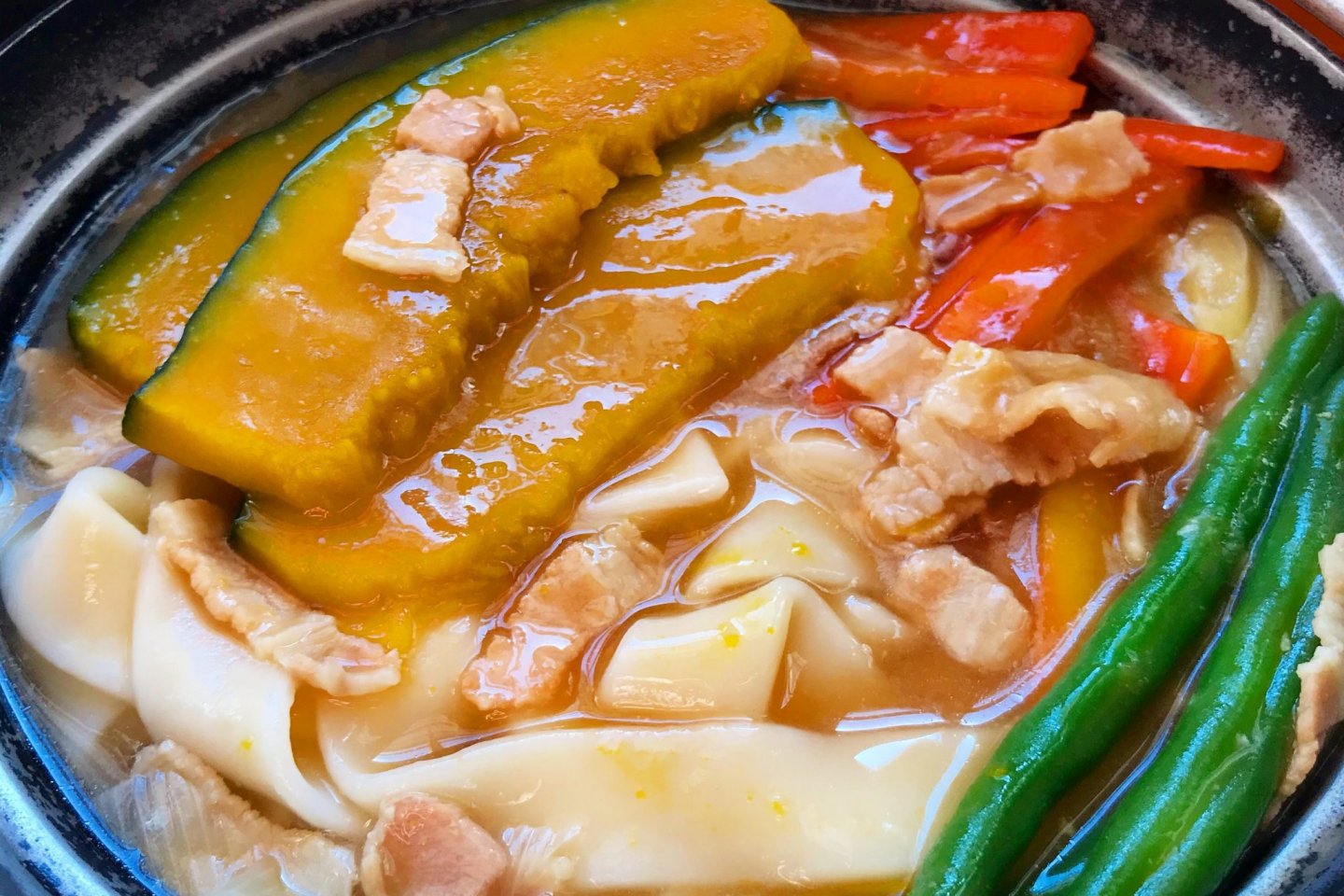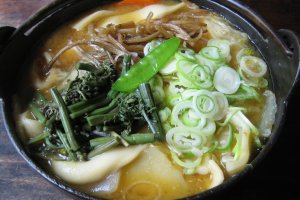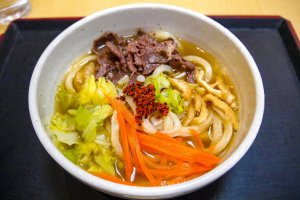Overview
With the beautiful and iconic Mt. Fuji as a backdrop, the cuisine of Yamanashi prefecture is not only unique but extremely delicious. Wheat-based noodle dishes feature strongly with hoto - arguably not a noodle - and barley heavy udon strong contenders for being signature dishes of the region. Despite being landlocked, preserved abalone finds a place in Yamanashi while thrift and commonsense has seen chicken innards turned into a delicacy. Here is a simple guide to some of the regional cuisine of Yamanashi.
Hoto
Yamanashi locals are adamant that hoto is not udon. Despite its noodle appearance, the dish's dumpling-like texture clearly sets it apart from its more famous relative. Add to that the incredibly hearty miso and vegetable broth and it's easy to see why the hoto feels like a hot spring for the belly. Yes, it's that comforting

Yoshida udon
Made with more barley than is the norm for udon, the noodles for Yoshida udon turn out to be quite firm and delicious. Prepared with water sourced from Mt. Fuji, these noodles are famously topped with not only carrots and cabbage but a number of restaurants also serve horse meat. Spicy condiment toppings are a feature with differing combinations depending on the location.

Awabi no nigai
Landlocked Yamanashi is home to a surprisingly local seafood. Awabi no nigai are abalone cooked slowly in a soy sauce-based stew and then sliced thin and served. Starting out as a method of preservation for the long journey from the coast to the Yamanashi, awabi no nigai is now a traditional food served at weddings and other similar celebrations.

Kofu torimotsu-ni
An attempt to make use of chicken offal that was once casually thrown away, Kofu torimotsu-ni sees the innards, each with their own textures and flavours, stewed briefly with sugar and soy sauce over a strong heat. The resulting caramelisation encases the innards, creating a salty-sweet flavour beloved by many in the area.






























As for the rest, torimotsu-ni sounds very interesting, udon topped with horse meat should be a winner, and abalone is something I've been wanting to try for years.